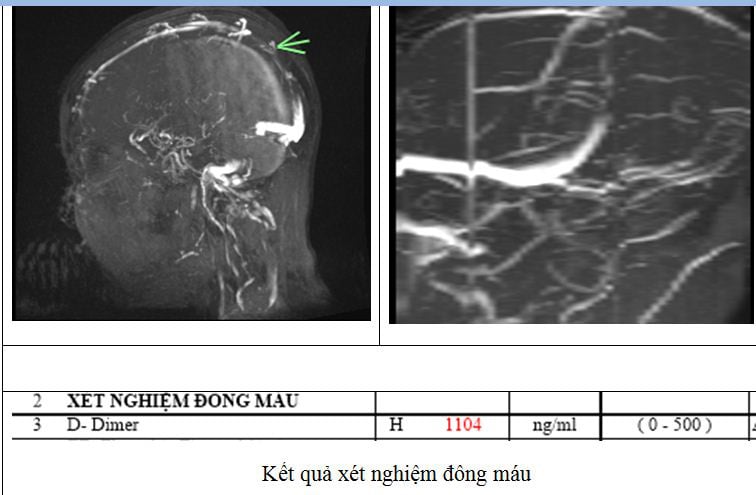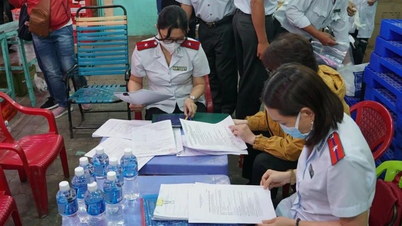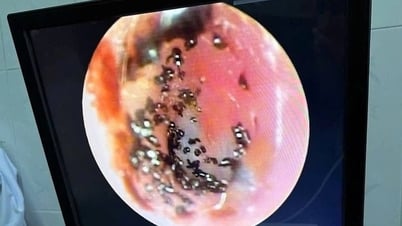
Image of cerebral venous thrombosis in a patient - Photo: Provided by the hospital
Faint signs
Phu Tho General Hospital announced that it has just received a patient with cerebral venous thrombosis, a special and rare form of stroke.
Specifically, the 38-year-old female patient (residing in Thanh Son district, Phu Tho province) had a headache 4 days before being admitted to the hospital. She took medicine at home but it did not help. After that, her consciousness slowed down and she was taken to Phu Tho General Hospital by her family in a state of slow consciousness, breathing on her own, and weak limbs.
The patient was ordered by the doctor to have an MRI scan, the results showed a cerebral infarction in the bilateral thalamus.
Realizing that bilateral thalamic infarction was a rather unusual lesion, the doctors consulted and diagnosed the patient with a rather rare disease, cerebral venous thrombosis.
The patient was treated according to the protocol for cerebral venous thrombosis. Anticoagulants were used for treatment. The patient progressed well after treatment from coma to full consciousness, improved limb strength, and is now able to walk on his own.
What is cerebral venous thrombosis?
According to Dr. Nguyen Anh Minh - emergency and intensive care unit, Stroke Center, Phu Tho General Hospital, cerebral venous thrombosis is a type of stroke in which thrombosis occurs on the venous side of the cerebral circulation, leading to blockage of one or more cerebral veins and dural venous sinuses.
Cerebral venous thrombosis has an annual incidence ranging from 1.16 to 2.02 per 100,000, with a female/male ratio of 3:1, a mean age of 37 years, and an incidence rate of only about 8% in those over 65 years old.
The disease is related to transient factors such as birth control pills, pregnancy, postpartum, infection... Permanent factors include congenital blood clotting disorders, malignant diseases, bone marrow, antiphospholipid syndrome...
"The cerebral veins are responsible for draining blood from the brain components to the heart. When there is cerebral vein thrombosis or dural sinus thrombosis, it will obstruct the drainage of blood from brain tissue, leading to damage to brain parenchyma (such as stroke).
Increased venous and capillary pressure leads to disruption of the blood-brain barrier, causing cerebral edema, increased intracranial pressure, and venous hemorrhage (infarction and hemorrhage combined).
The symptoms of the disease are quite diverse, symptoms that may occur are headache, convulsions, increased intracranial pressure (blurred vision, papilledema), paralysis" - Dr. Minh shared.
Dr. Minh added that cerebral venous thrombosis is a dangerous and rare disease, difficult to diagnose. Therefore, early diagnosis of cerebral venous thrombosis when the patient is admitted to the hospital is very important for emergency treatment and treatment of cerebral venous thrombosis, helping to increase the patient's recovery ability.
Source: https://tuoitre.vn/dau-dau-4-ngay-den-vien-moi-phat-hien-mac-the-dot-quy-nao-dac-biet-20240913095126697.htm


![[Photo] Prime Minister Pham Minh Chinh chairs conference on anti-smuggling, trade fraud, and counterfeit goods](https://vphoto.vietnam.vn/thumb/1200x675/vietnam/resource/IMAGE/2025/5/14/6cd67667e99e4248b7d4f587fd21e37c)































































































Comment (0)